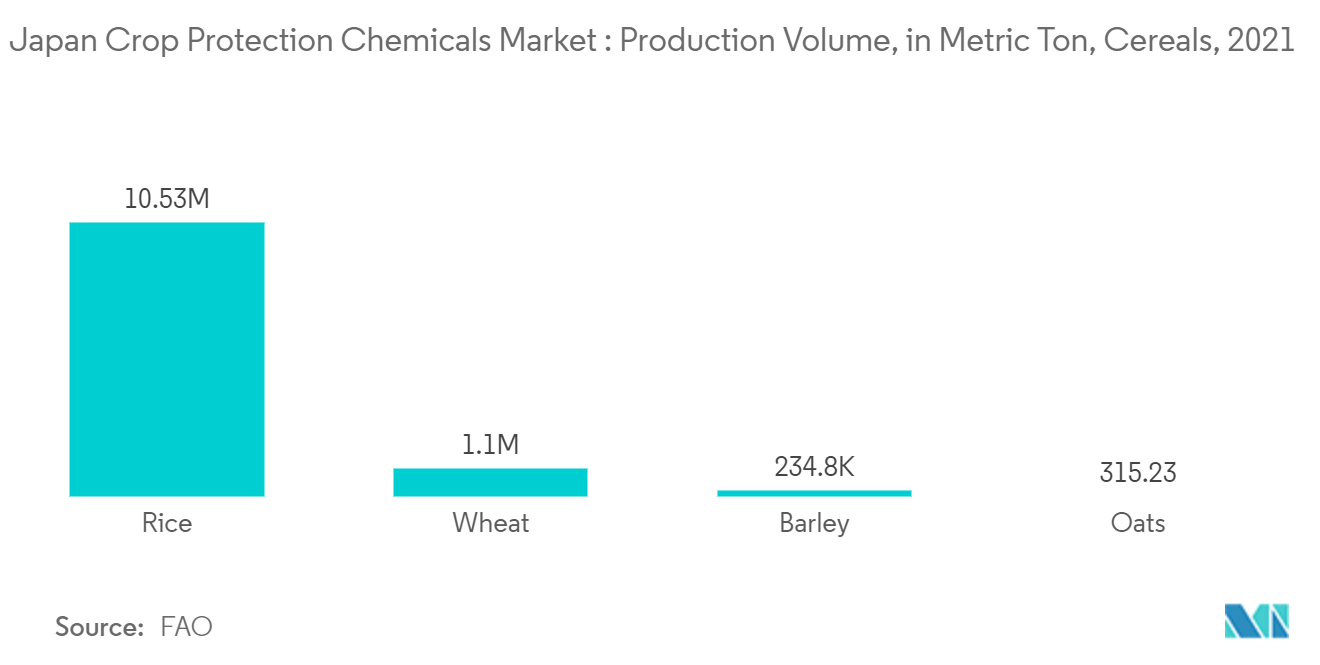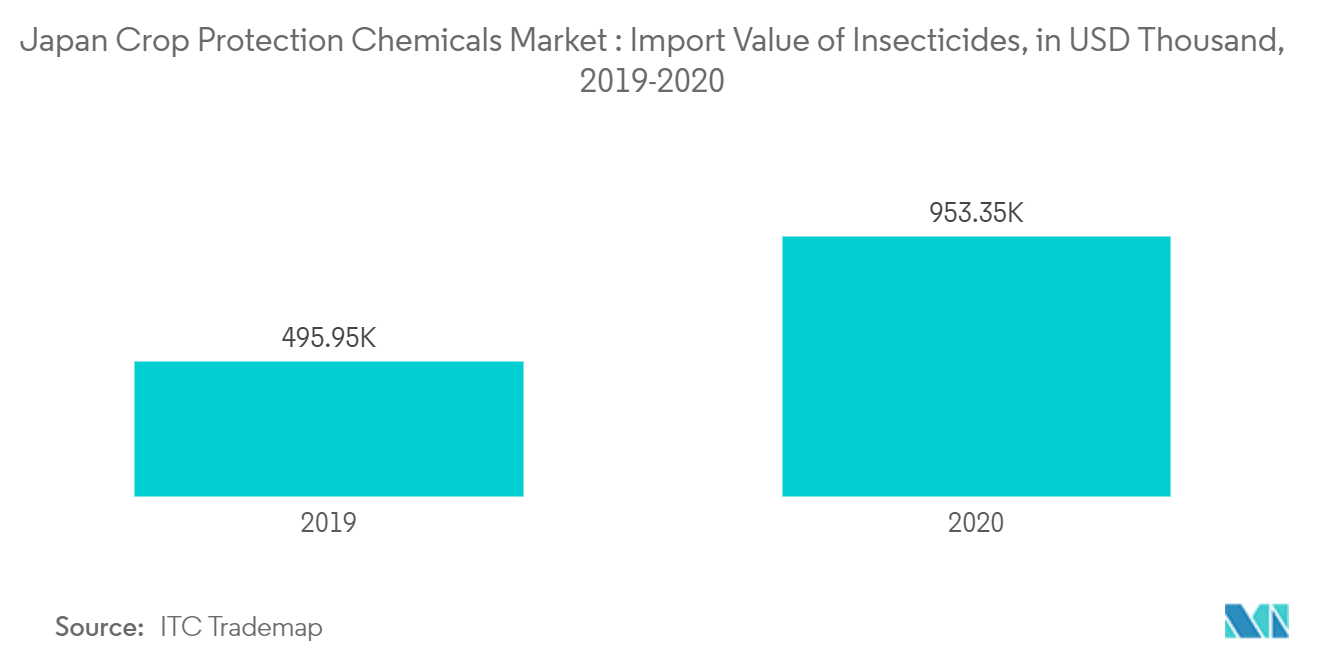Market Trends of Japan Crop Protection Chemicals Industry
This section covers the major market trends shaping the Japan Crop Protection Chemicals Market according to our research experts:
Increase in Grains and Cereals Production is Driving the Market
Japan is one of the largest producers of grain and cereals and is ranked the 12th largest producer of rice in the world. Grain and cereal products are of strategic importance in the whole world economy, also in Poland. They are essential ingredients of food; they are used in distilling, brewing, milling, and the industrial, energy, and pharmaceutical sectors.
Cereals such as rice, wheat, corn, barley, millet, and oats are the major crops grown in the country. According to the Food and Agriculture Organization of the United Nations (FAO) statistics, the production of cereals increased from 11,685.5 thousand hectares in 2020 to 11,898.8 thousand hectares in 2021. This, in turn, explains their predominance in the total volume of plant protection chemicals in the country.
The most important active substance used on this crop includes pesticides Cyromazine and Fenitrothion. With extensive cultivation of grains and cereals carried out across various parts of the country, the pesticide market application on grains and cereals is projected to grow during the forecast period. The Government of Japan (GOJ) has proposed changes to the Maximum Residual Limits (MRLs) for Oxadiazon, Dimethenamid, Tebufenozide, Pyributicarb and Metaldehyde, as well as the maximum level for cadmium in rice.

Insecticides Dominate the Market
Insecticide is an agent that destroys one or more species of insects. The ease of application is a big advantage of chemical insecticides over mechanical pest control methods. This also helps save labor costs. Chemical companies are taking advantage of Japan's weak laws on pesticide use by selling a wide variety of broad-spectrum pesticides for use in rice farming, including neonicotinoids banned in other countries. But other pesticide types with similarly devastating effects on aquatic ecosystems continue to be sold and promoted, such as Trebon, a synthetic pyrethroid sold by Mitsui Chemicals, and Prince, containing fipronil, a phenylpyrazole sold by BASF.
According to information provided by the Japanese NGO Act Beyond Trust, five main companies, Bayer, BASF, and Syngenta from Europe and Sumitomo Chemical and Mitsui Chemicals from Japan, manufacture and sell rice-field insecticides in Japan. With efforts aimed at reducing unnecessary utilization of chemical insecticides and comparatively higher use of bio-insecticides, the Japanese insecticide market is expected to witness healthy growth during the forecast period, primarily due to increased demand for biological insecticides.
Additionally, Mitsui Chemicals promoted dinotefuran as a featured product in its Corporate Social Responsibility (CSR) report for the year to 31 March 2018, stating that agriculture was expanding due to growing demand amid a rising global population and economic development in emerging countries.

